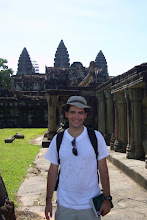Before continuing, a word about the class. The period of the Second Temple lasts from c. 536 BCE, when the Persian emperor Cyrus the Great conquered the Babylonians and allowed the Jews to return to Canaan/Judea/Palestine/Israel and rebuild their temple, until 70/73 CE, when the Roman army under the command of Vespasian and his son Titus destroyed the Temple, Jerusalem, and Jewish communities (including Masada) south of the Galilee. It's an incredibly rich and complicated period in Jewish history; in those 600 years, the Jews in Judea lived under Persian, Greek, Seleucid, Maccabee/Hasmonean (self), and Roman rule. It's a period in Jewish history marked by a broad corpus of diverse literature, religious/spiritual development, and deep political strife and sectarianism. In classical Zionist thought, it's the last period in Jewish history worth discussing. It's a period I've studied in college no less than 6 times, which makes this class a 7th (or 8th, depending on how you count), and therefore a somewhat redundant review in my eyes. But I go, and sit, and do homework for other classes, or write blog entires, or gchat.
That being said, the trip itself was actually a lot of fun. I'm not crazy about the professor - he's a very scattered lecturer and has a hard time making coherent sentances. Second Temple History is a subject I find fascinating (hence the inordinate amount of times I've studied it) and he manages to make it both boring and hard to understand. Which saddens me. But on the tiyul he was much more focused and coherent, clear and concise. It was a very enjoyable educational experience. The time in the old city was also pretty interesting; by the late afternoon, when we were there, the sun was setting and the weather was perfect and the shadows on the excavated ruins of Byzantine, early Arab, and late second temple period was a fantastic setting to listen and learn.
And now some photos!

The model of Second Temple Jerusalem, c. 66 CE

Fellow classmates looking at the model

My professor lecturing under Robinson's Arch

The southern wall of the Temple Mount

The excavations of a Byzantine house

No comments:
Post a Comment